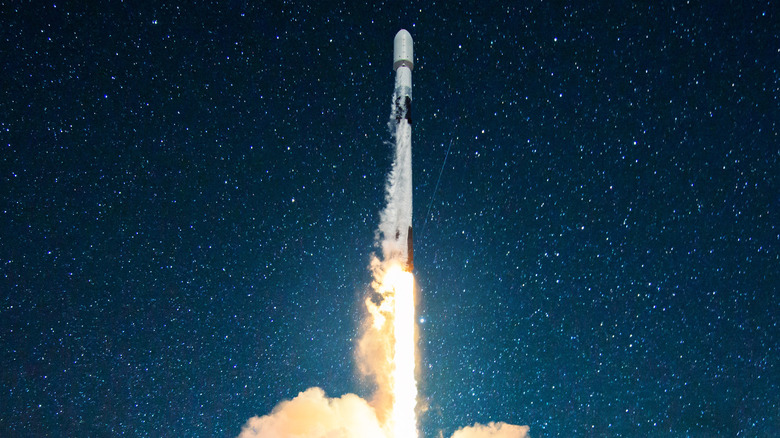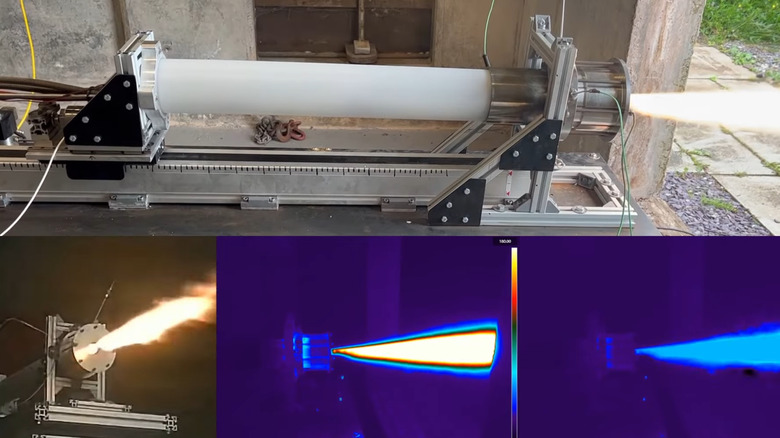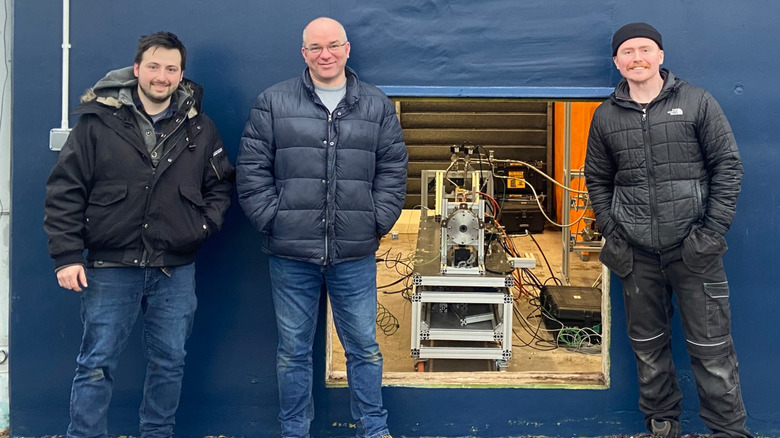This Self-Eating Rocket Could Clean Up The Space Trash Problem Before It Even Starts
The commercialization of space is in full swing right now, and the pace of competitive innovation is so feverish that even agencies like NASA are outsourcing their missions to private names like SpaceX. However, there's a fundamental problem with more space exploration, one that has conjured up a massive waste management conundrum without a concrete solution in sight.
Right now, the Earth's orbit is home to millions of junk pieces originating from decommissioned rockets, collision events, and more. However, the risks posed by them are even bigger: Damage to satellites, triggering collision events, increasing the complexity (and therefore, the cost) of space missions, obstructing Earth-based observations, and of course, the possibility of a Kessler event. Of course, it won't exactly be cheap to get all that junk towed away, or brought back to Earth.
Before remedial missions can be sent out into space, scientists need to solve the high cost of these travels in the first place. A team at Glasgow University is working on an ambitious idea that solves both problems in one go: self-eating, or self-consuming rockets. The idea is exactly what the name suggests — build a rocket that eats its own body for fuel and leaves little to no leftovers floating in space.
The core self-eating concept
The team at Glasgow University claims to have "built and fired the first unsupported 'autophage' rocket engine." Fittingly named the Ouroboros 3 rocket engine, after the ancient symbol of a snake eating its own tail depicting the eternal cycle of death and rebirth, it is said to be capable of missions beyond the Earth's atmosphere.
The latest iteration of the rocket relies on a mix of liquid propellant, and then feeds the plastic-based parts as supplementary fuel in a sequential manner, depending on the thrust required at any stage of the journey. As part of their latest test, the team fired the Ouroboros 3 rocket and achieved a gross thrust of 100 Newtons — and more importantly, demonstrated that it is capable of a controlled burn at a stable rate.
Another breakthrough they achieved was a shift in their fuel strategy. "More energetic liquid propellants can be used, and that the plastic fuselage can withstand the forces required to feed it into the engine without buckling," notes the press release. The team is calling these developments a solid step toward the development of a viable flight concept.
Another crucial advantage of the self-consuming rocket is that all the weight freed by up the burning of fuel can be used for extra payload. The team notes that compared to a conventional rocket of the same mass, an autophage rocket can deliver a bigger payload. Unsurprisingly, it is being hailed as an ideal route for injecting nano-satellites into orbit, but the tech is not limited to enthusiastic science circles. Governments are also following the developments keenly.
The fundamentals of self-eating rockets
The core design idea behind an autophagic rocket is that it employs a propellant rod that harbors solid fuel on the exterior, while the rocket's body is the oxidizer sitting inside. When exposed to temperatures in the ballpark of a few thousand degrees, the fuel and oxidizer undergo rapid combustion and produce gases, which propels the vehicle.
As far as throttling goes, the team aims to control that by changing the pace at which the fuel rod is fed into the oxidation chamber. The rocket vehicle would consume itself from the bottom, eventually making its way to the top. The solid fuel in this case is a sturdy plastic-based material such as polyethylene, which is then pushed into a hot engine where the oxidizer and fuel are both effectively vaporized, and the resultant gases provide the thrust.
In 2020, the Defense & Security Accelerator — which operates under the aegis of the UK's Ministry of Defense — financially backed the University of Glasgow's efforts to develop the self-eating rocket concept, hoping that it would one day reduce the cost of injecting small payloads into the orbit.
"We could size the launch vehicles to match our small satellites, and offer more rapid and more targeted access to space," notes Professor Patrick Harkness, senior faculty at the University of Glasgow. Moving ahead, the team plans to focus on scaling up the thrust capacity so that they can develop a rocket vehicle capable of payload injection.
A promising future, far away
Now, the idea behind the Ouroboros-3 rocket is compelling for multiple reasons, but scaling up and creating an actual launch vehicle capable of delivering payload into the orbit (and beyond) won't be an easy task. So far, the team has only done test firings in controlled laboratory conditions. It could take a while before a full-fledged rocket based on the autophage tech can take shape, perform test flights, pass validation tests, and get certified for commercial launches.
Even the team behind the team Ouroboros-3 is setting up small goals for it at the moment. "We aim to scale up by around two orders of magnitude, but not much further because our niche is in nanolauncher," Professor Harkness tells Gizmodo.
At the moment, "cubesats" (or cube satellites) form the bulk of such satellite launches. As far as injection goes, SpaceX remains the top dog; not only because it has a mature tech stack under its belt with a solid track record of commercial launches.
SpaceX has also reduced the cost of launches, especially thanks to the concept of reusable rockets that it can land with an impressive accuracy. Rocket Lab, on the other hand, gravitates toward the idea of catching rockets with helicopters. As far as the space trash problem goes, NASA is considering (and backing) multiple proposals to address it, while the likes of Science Applications International Corporation (SAIC) are keeping a tab on all the junk floating close to our planet.


